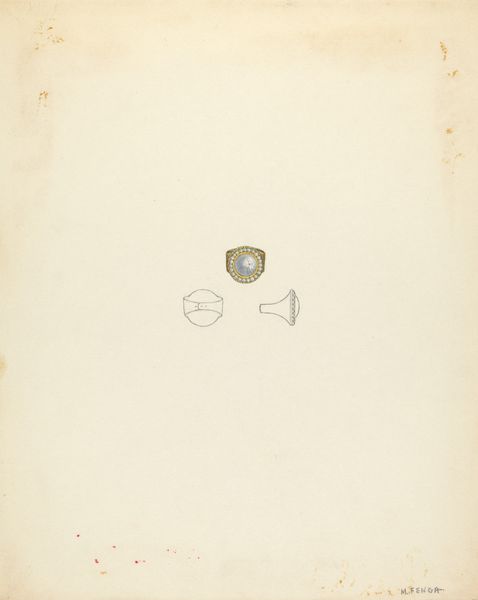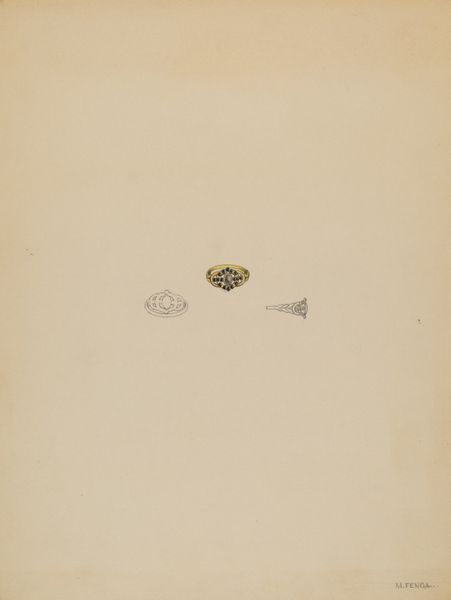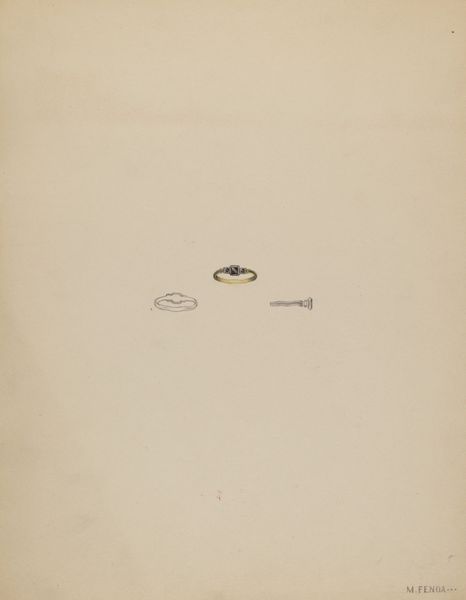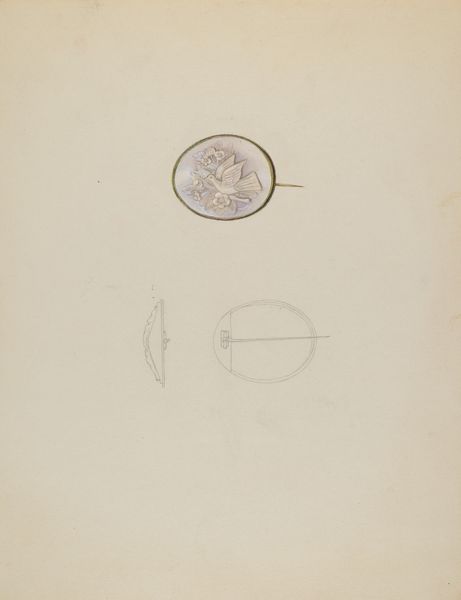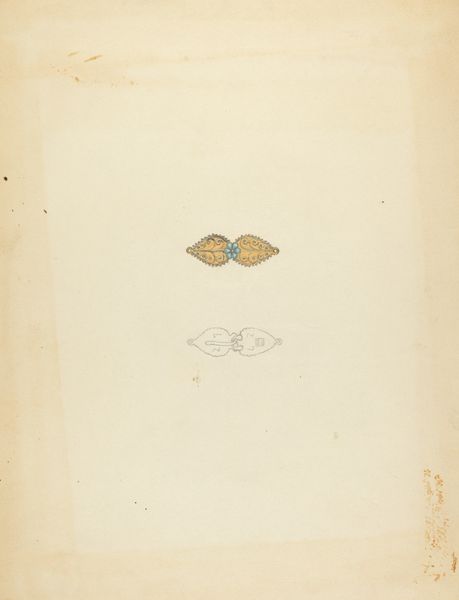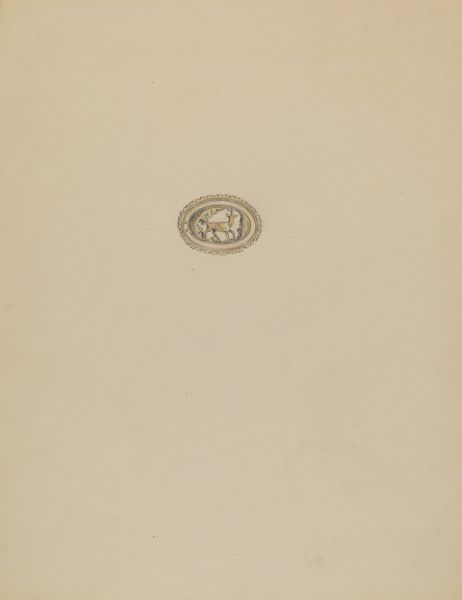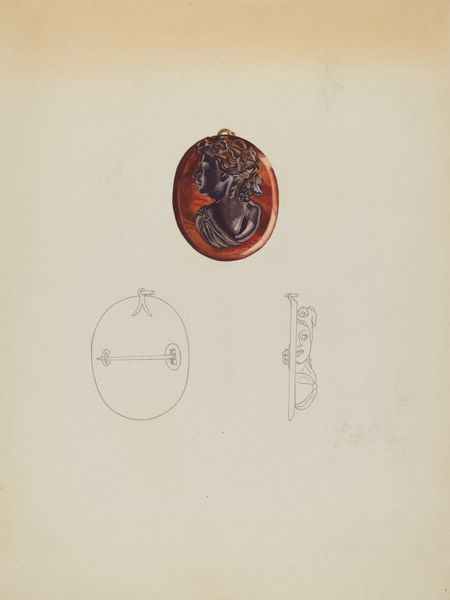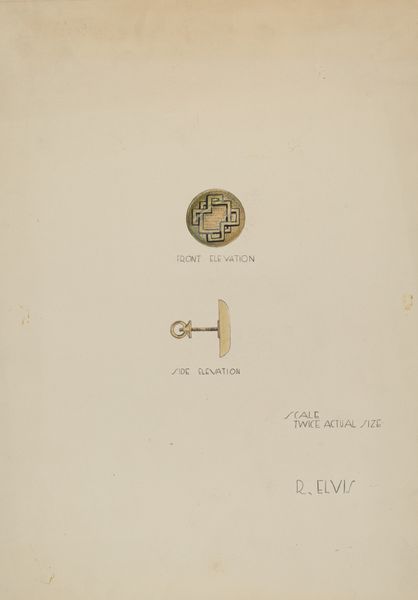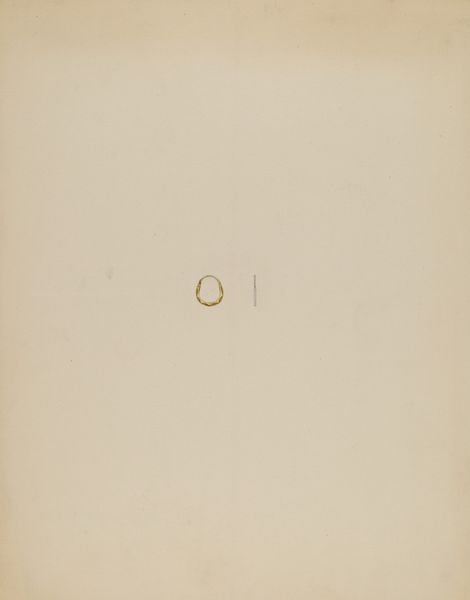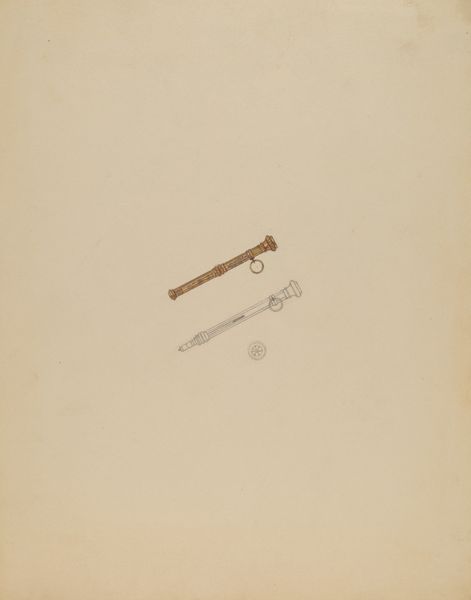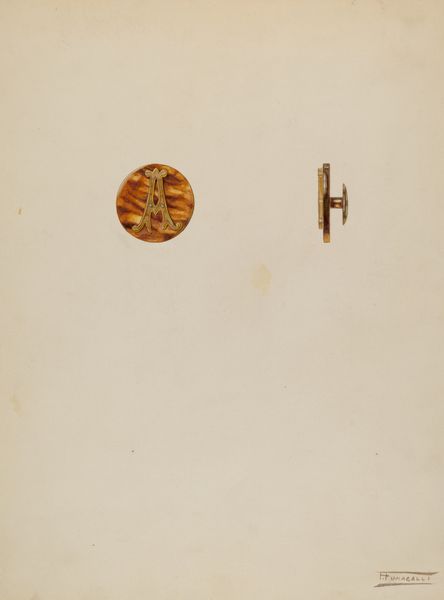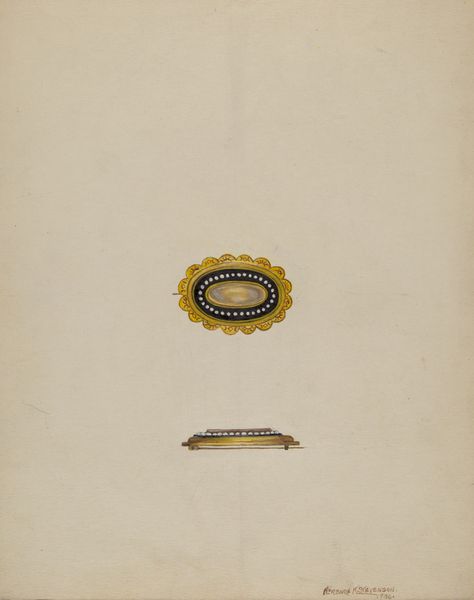
drawing, watercolor, pencil
#
drawing
#
watercolor
#
geometric
#
pencil
#
watercolor
Dimensions: overall: 30 x 22.6 cm (11 13/16 x 8 7/8 in.)
Copyright: National Gallery of Art: CC0 1.0
Curator: Let's examine this drawing titled "Ring," believed to have been created by John H. Tercuzzi sometime between 1935 and 1942, incorporating pencil and watercolor techniques. Editor: My first impression is one of subtle elegance. The pale blues and the surrounding arrangement evokes a sense of vintage sophistication, like something out of an Art Deco fashion plate. Curator: Absolutely, its elegance derives primarily from the concentric composition. The circular form of the ring itself echoes in the arrangement of smaller stones, directing the eye to the work’s central visual element. Editor: And I immediately want to think about the symbolism embedded within a ring, the promise of fidelity, power structures associated with owning or gifting jewelry – particularly during this historical period. Did the ring design have any larger socioeconomic implications? Curator: The rendering itself exhibits careful consideration of line and wash, note the almost mathematical precision with which the facets of the gem are suggested. Tercuzzi doesn’t just present the ring; he deconstructs its form, in a way almost like Cubism, while adhering to naturalistic representation. Editor: While that’s an interesting insight on aesthetic components, Tercuzzi created this rendering in the late 30’s during The Great Depression, which prompts the question: who exactly had access to luxurious jewelry then and whose gaze is legitimized here by glamorizing such exclusive artifacts? Curator: Interesting, yes, Tercuzzi highlights the ring from three viewpoints that together generate a dynamic image; each one a view highlighting an aspect that enriches the audience’s full sense of its objecthood. Editor: So in looking at Tercuzzi's geometric composition, considering the period and politics, how do we reconcile the object as artifact of power? Does highlighting geometric forms unintentionally obscure the power dynamics reflected by access to objects of such immense beauty? Curator: I think in analyzing this, it becomes more evident how aesthetic intentions reflect a period marked by artistic innovation amid social and economic strife. Editor: Right. Approaching "Ring" with sensitivity helps it unlock its secrets through discussions about more than what’s visible, it challenges its value in broader social constructs as well.
Comments
No comments
Be the first to comment and join the conversation on the ultimate creative platform.
